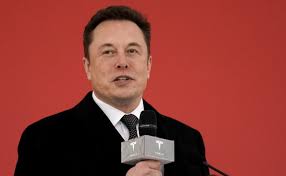Tesla’s most significant products this year and next will not be vehicles, according to CEO Elon Musk, but rather software that drives them autonomously and a humanoid robot that the firm hopes to assist in the manufacturing.
The grandiose claims made by the industry’s most well-known billionaire confront significant difficulties, ranging from technology to legislation. For years, Tesla and other car technology companies have fallen short of their self-driving software ambitions.
“I love the fact that they’re pushing the envelope, but I think they are too aggressive,” Roth Capital Partners analyst Craig Irwin said.
Musk’s career has been based on overcoming critics with functioning enterprises in electric automobiles and rockets. Some Tesla users pay $12,000 for self-driving packages in the hope that complete autonomy would be available soon, and 60,000 Tesla drivers are testing the latest self-driving software on a scale that other autonomous vehicle software firms can only dream of.
“I’d be surprised if we didn’t reach full self-driving that is safer than humans this year. “I would be startled,” Musk remarked, anticipating that complete self-driving cars will become “Tesla’s most important source of revenue.””
“It’s nutty good from a financial standpoint,” he said, adding that robotaxis would increase a vehicle’s usefulness by five times since owners could send their vehicles out to work when they weren’t required.
Tesla relies on cameras and computer intelligence, eschewing technology such as radar and lidar used by competitors such as Waymo. That strategy has sparked criticism.
“You must not only be able to see a person directly in front of you, but you must be able to do it with 99.999999999 percent reliability. Even running someone over once is not an appropriate response “According to Austin Russell, CEO of lidar manufacturer Luminar.
According to Philip Koopman, a Carnegie Mellon University scientist who has been working on autonomous vehicle safety, one major issue is that at scale, unique scenarios might frequently arise.
“Without a human driver to handle safety for novel situations the machine learning hasn’t been taught already, it’s very difficult to ensure safety in a completely automated vehicle,” he added.
Even if the technology succeeds, Tesla would face more stringent regulatory scrutiny before deploying fleets of free-roaming robotaxis. Following collisions between the vehicles and parked emergency vehicles, US auto safety officials launched an inquiry into Tesla’s sophisticated driver assistance technology.
Federal vehicle safety officials have given state recommendations, but no overarching norms covering self-driving automobiles. According to Koopman, certain jurisdictions’ regulations will require clearance for a completely autonomous car. During an earnings call a year ago, Musk stated that he was “highly confident the car will be able to drive itself with reliability in excess of human this year.”
CJ Moore, Tesla’s autopilot engineer at the time, told a California regulator last year that Musk’s self-driving technology tweet “does not match engineering reality.”
Musk also said that engineers are working on a humanoid robot named Optimus that will be released next year and potentially handle global labor shortages in the long run while also being able to move products around a plant in the short term.
“For performing dangerous and repetitive tasks, using a humanoid robot is exactly the wrong approach,” said Raj Rajkumar, an electrical and computer engineering professor at Carnegie Mellon University.
